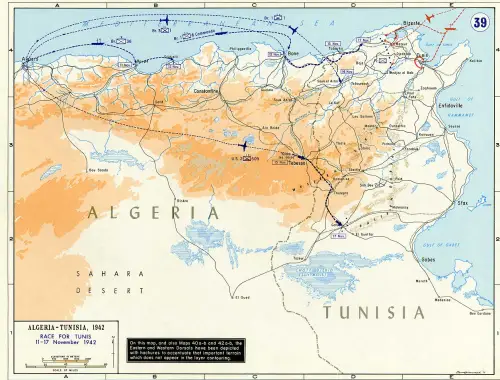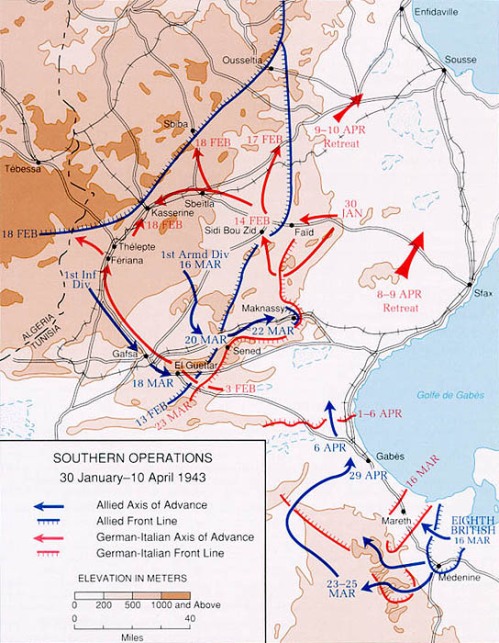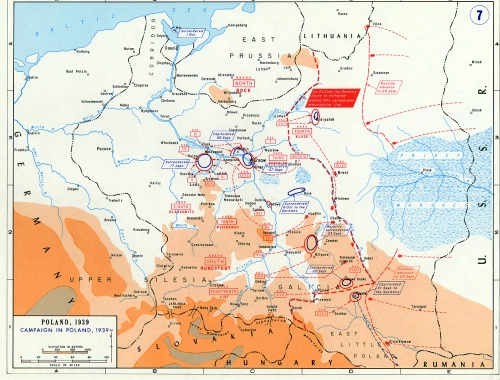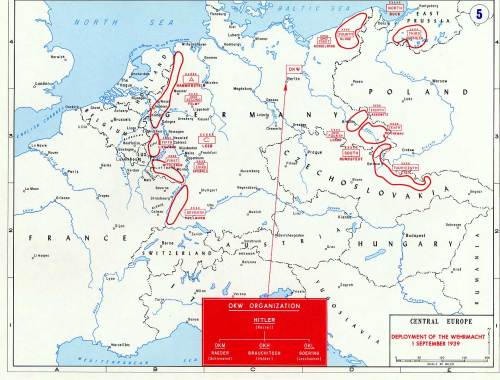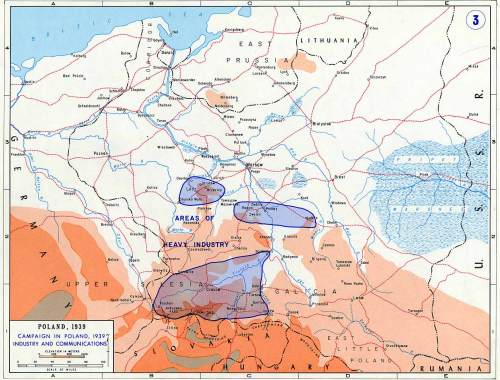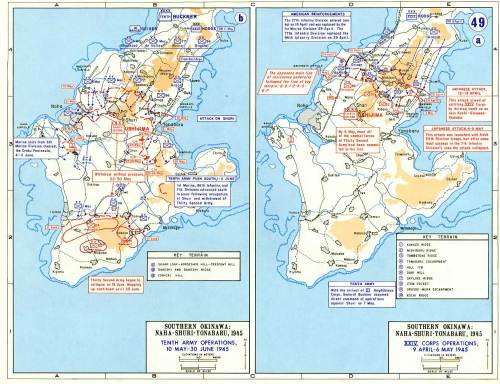The Tunisia Campaign – November 17, 1942 – May 13, 1943 – (also known as the Battle of Tunisia) was a series of World War II battles that took place in Tunisia in the North African Campaign of World War II, between Axis and Allied forces. The Allies consisted primarily of American, British Imperial Forces and the French Army. The battle opened with initial success by the German and Italian forces, but the massive supply and numerical superiority of the Allies led to the Axis’ complete defeat. Over 230,000 German and Italian troops were taken as prisoners of war, including most of the Afrika Korps.
Axis Initiative, Situation 14 February 1943
Map of the Campaign In Northwest Africa, The Battle Of Kasserine Pass 14-22 February1942
North Africa, Mao of The Allied Invasion, 8 November 1942
Mao of Northwest Africa 1942-1943
Map of The Pursuit To Tunisia, November 1942-February 1943
 Map of The battles at Kasserine Pass and Sbiba gap
Map of The battles at Kasserine Pass and Sbiba gap
Map of The Race For Tunis, 11-17 November 1942
Tunisia, Easten Task Force, Map of 25 Nov-10 Dec 1942
Tunisia, Map of The Final Allied Offensive 22 April-3 May 1943
Tunisia, Situation 22 April 1943
Map of Tunisia, Southern Operations, 30 Jan -10 April
Tunisia, Southern Operations, Map of 30 Jan -10 April
Tunisia, Taking the Bridgehead, Map of 20 April – 13 May 1943
Some of the maps are used with the kind permisson of the United States Military Academy at West Point
Other maps published on Public Domain – U.S. Army Center Of Military History
Recommended reading: Tunisia, 17 November 1942-13 May 1943 – brochure by the U.S. Army Center Of Military History
